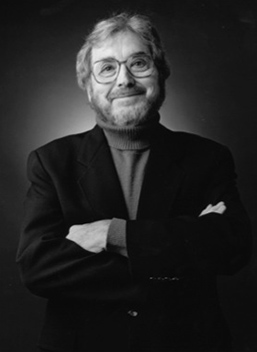
Pharmaceutical advertising has been known for excellence in graphic design and this reputation owes much to the career of Dick Jones. He was a key designer at McAdams, Sudler & Hennessey, and at art studios during the ’50s and ’60s—the industry’s “Golden Age.” Later, he continued Rx work at his own company, Dick Jones Design, while also extending his range to nonpharmaceutical clients. But, in 1978, he returned to medical advertising joining with Harry Sweeney to form Dorland Sweeney Jones.
Jones not only participated in the creation of healthcare advertising for over 40 years, he also has made a unique contribution to our field by collecting, throughout his career, work he judged worth preserving. This archive became an invaluable part of Medicine Ave: The Story of Medical Advertising in America that was published by the Medical Advertising Hall of Fame in 1999.
The designers, illustrators, and photographers Jones worked with are a “Who’s Who” of famous names. On graduation from the Rhode Island School of Design in 1951, he moved to New York. After jobs at Esquire and a consumer agency, he joined CBS Television and the legendary William Golden. Then, he began his career in pharmaceutical advertising at McAdams where, in 3 years, he rose to become senior art director on Pfizer—one of the leading advertisers at a time when the industry was experiencing a revolution in graphic style. His colleagues at McAdams were Rudi Wolff and Victor Trasoff, and while there he encouraged a young freelance illustrator, Andy Warhol. After 2 years with Harry and Marion Zelenko at their studio, he joined S&H where, in his years there, the des ign staff included the renowned Herb Lubalin, and such talents as Ernie Smith, Arthur Ludwig, James McFarland, and Frank Wagner. Jones was at S&H 12 years, moving to the top design position—creative director/art—before opening his own studio. Well known illustrators whose work Jones incorporated into Rx campaigns were Joseph Low, Lorraine Fox, Ginnie Hoffman, Don Almquist, and Etienne Dellesert. Photographers included Jay Maisel, Simpson Kalisher, Rolf Tietgens, Alfred Gescheidt, Denes Petoe, and Mottke Weissman.
Recalling names associated with Jones is appropriate in bringing out an important side of his character. Advertising is a collaborative activity and Jones was exceptionally skilled in interacting with those in a creative team.
Someone who knows him well describes Jones’ method of managing creative staff this way: “He’s the maestro, the master…give people assignments and then let them do their thing…a lot of people playing set positions in the process. And then, all of a sudden, all the ingredients come together at once in the campaign or the presentation. He was marvelous at getting the best out of people that way.”
Successful, creative advertising and promotion is not simply the result of good “people skills.” Jones is remembered primarily for his discrimination and taste—the high standard he set for his own work and for his group.
“He could take a package insert and do it with style and grace,” says a long-time associate.
He is described by those who knew him as a perfectionist who was concerned with the smallest detail to arrive at the proper balance of copy, graphics, layout, type, color, and overall tone. At the same time he did not overwork material to achieve excellence.
One former client recalls, “Some people labor on it and go on and on…with Dick, he seemed to know when that point came and he was off to something else.”
Jones’ appreciation for outstanding creative work led him to keep the ads and mailers from his time in the business that he particularly liked. He had in mind collecting them in a book on the remarkable flowering of pharmaceutical advertising that had occurred during his career. He teamed up with John Kallir—one of the founders of KPR—who had also saved materials from the period.
The archive they researched became the basis for MAHF’s Medicine Ave—an overview of medical advertising agencies and their work that records the history of our specialized form of advertising. The industry owes them a debt of gratitude for their foresight in recognizing the historic and creative value of past work and its preservation.
Dick Jones was a productive art director for over 40 years in pharmaceutical advertising. The number of creative pieces he designed—ads, mailers, sales aids, brochures, promotional items of all kinds—is staggering. Add to this volume the dimension of quality—his creative campaign concepts, his sensitivity to graphics, and his taste in execution—and you come to an appreciation of his impressive presence in medical advertising. Dick Jones retired from DSJ in 1992, but has remained active creatively, volunteering his services to a number of nonprofit organizations.